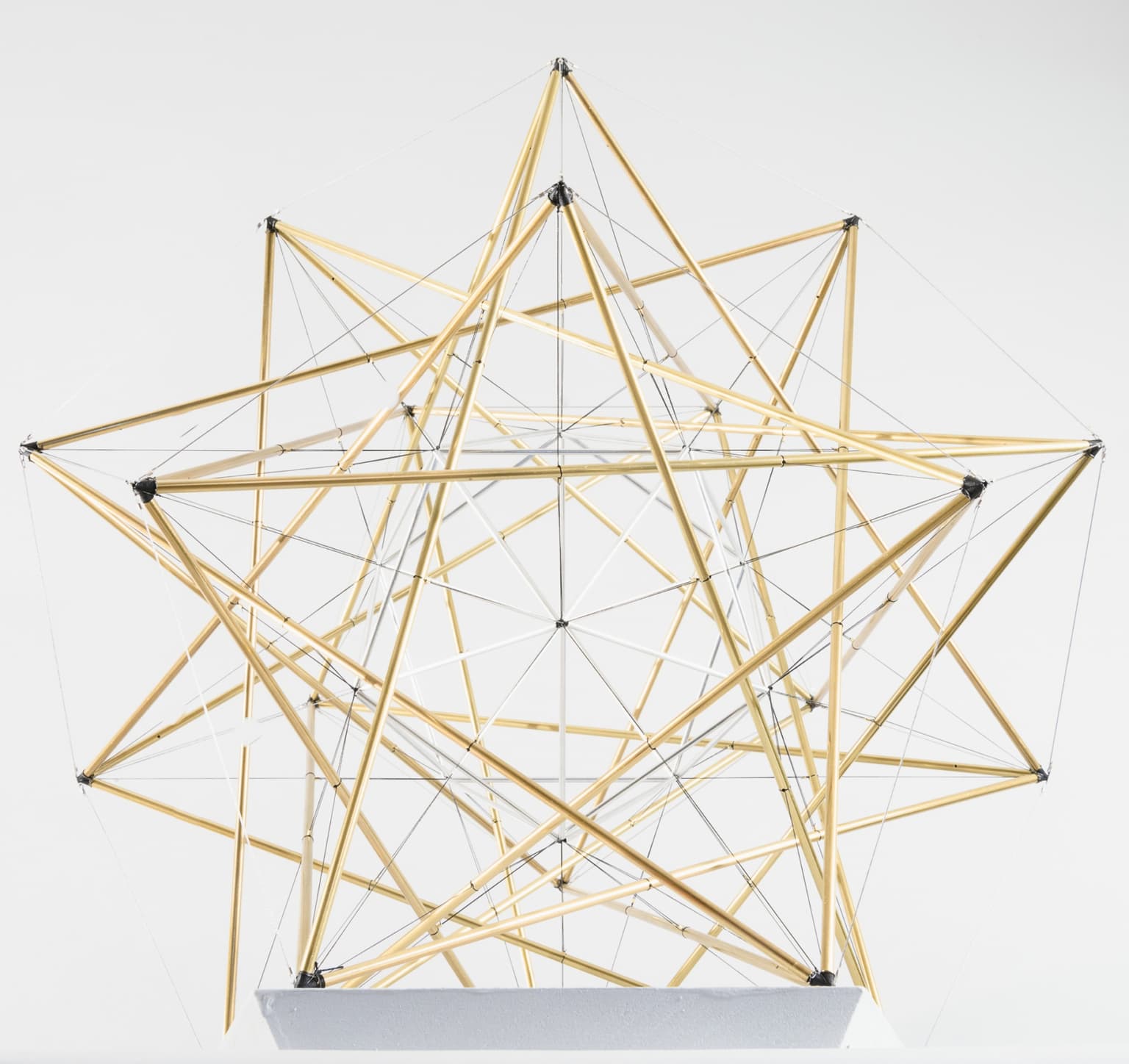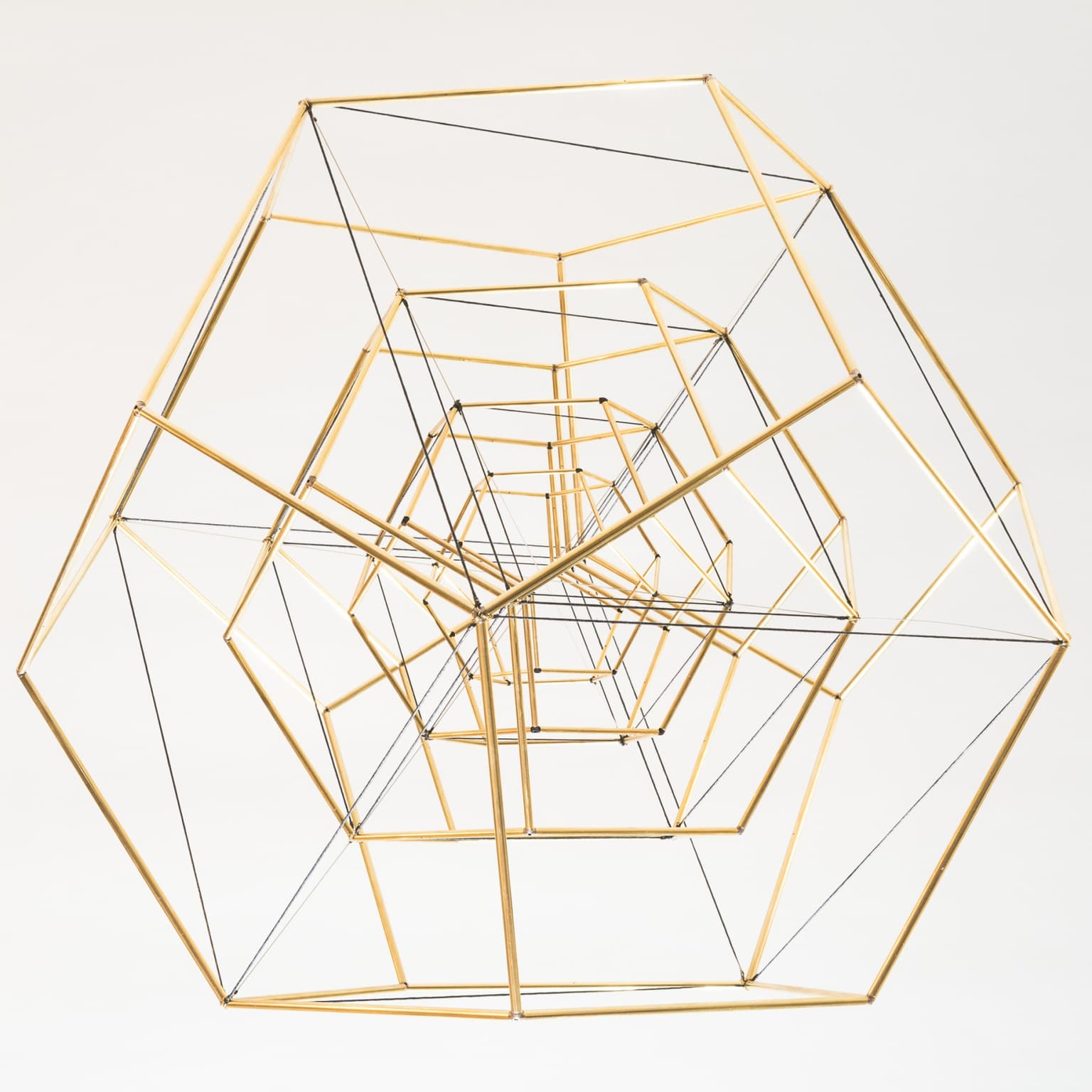Martin Levin
Artists
Martin Levin
Portland, Oregon, USA
Statement
I received a Ph.D. in mathematics from Johns Hopkins. For most of my career I taught high school math in Waldorf schools, where the pedagogy encourages the bridging of mathematics and art. I'm now retired. The Platonic solids are quite simple geometric forms, and yet, as one contemplates them and builds up and holds the forms in one’s imagination, they become quite captivating. The center has a dual (in the sense of projective geometry), which is the plane at infinity. One can imagine the form carved out by planes and lines coming in from the infinitely distant periphery. The model shown here is designed to suggest shapes that are not solid blocks, but rather created by lines and planes coming from the periphery.
Artworks

Five Tetrahedra in Tensegrity
40 x 40 x 40 cm
brass, aluminum, wire, string, nylon joints
2014

Dodecahedra and Cubes in Geometric Progression
50 x 50 x 50 cm
brass, steel, string
2014